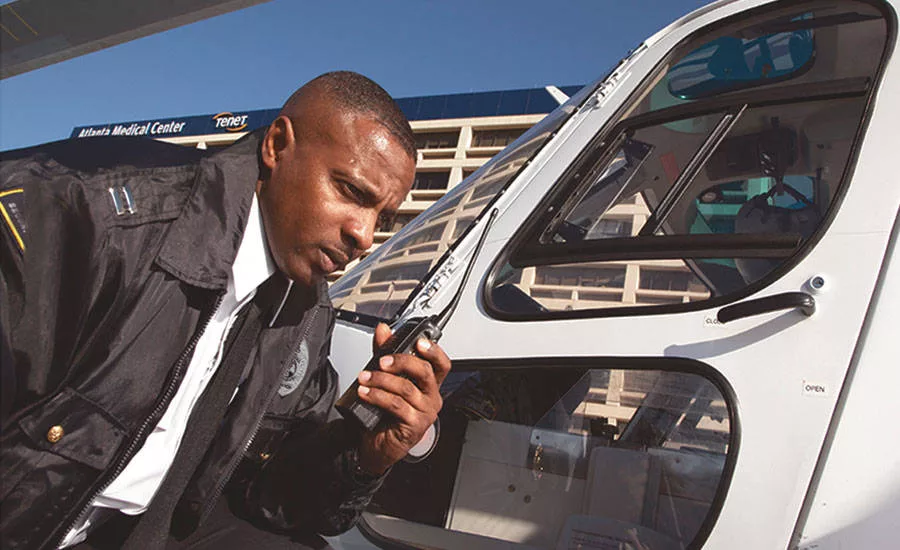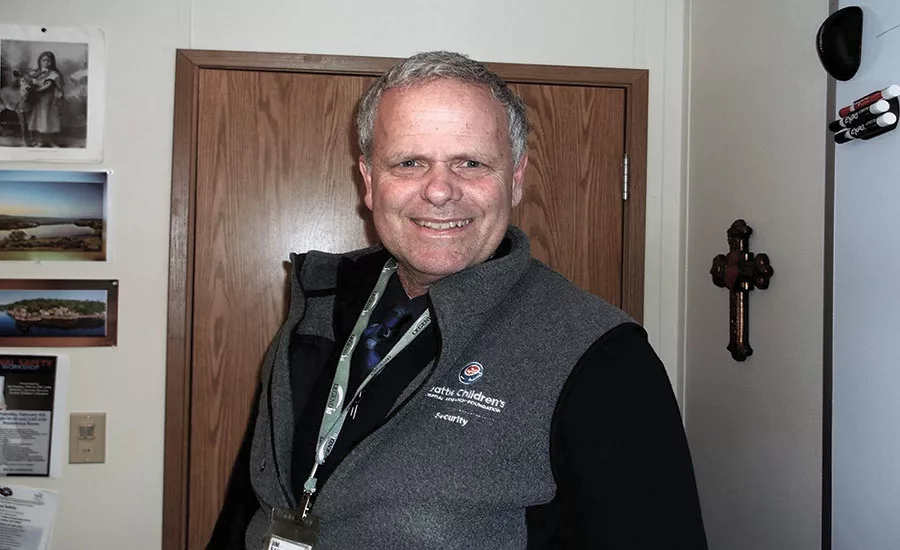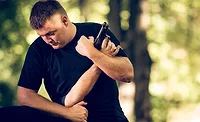Mitigating Risk with Scenario-Based Security Officer Training
Learning how to respond to complex situations can help make a robust security officer training program even stronger.

At Allied Universal, the type and amount of scenario-based training depends on the client’s security plan and vertical market setting. Photo courtesy of Allied Universal

Scenario-based training also teaches officers to be more efficient by reducing incident response times, and it can broaden security officers’ understanding of risk management, says Chris Hertig, a retired professor and board member of the International Foundation for Protection Officers. Photo courtesy of Chris Hertig

“In healthcare, if you don’t do scenario-based training and don’t specialize in some of these areas (of risk), you can get in trouble,” says Jim Sawyer, Director of Security Services at Seattle Children’s Hospital. Photo courtesy of Jim Sawyer
It’s difficult to pin down the number of organizations that utilize scenario-based training for security officers, but experts agree that this type of training appears to be increasing in use. From e-learning courses to real-world simulations, a large variety of companies offer scenario-based training courses. Scenario-based training can be as simple as a quick evacuation procedure and it can be as complex as a full out active shooter situation where you’re partnering with local law enforcement, bringing them in and setting up an actual situation that might happen and using actors, says Brent O’Bryan, Vice President of Corporate Training and Development at Allied Universal. Weaving it into corporate training initiatives has definitely become more popular.
Scenario-based security officer training can help mitigate an organization’s risk in several different ways. Using scenarios in training is like becoming fluent in a language. You only become fluent in a foreign language when you’re practicing it or using it, O’Bryan says. It’s hard to become fluent in a language just sitting in a classroom in a country where that language is not spoken. Same thing with scenario-based training. If a security officer firm is training employees to become fluent in how to respond, it can actually save lives because now they know how to respond in that situation. When they’ve actually practiced it and had to think through it, they’re going to be better prepared to react appropriately and quickly in the right way. G4S Secure Solutions believes that it’s their responsibility to proactively prepare officers to respond to situations appropriately. Since security decisions can have life or death consequences, scenario-based training offers a partial substitute for that real-world experience.
Scenario-based training also teaches officers to be more efficient by reducing incident response times, and it can broaden security officers’ understanding of risk management, says Chris Hertig, a retired professor and board member of the International Foundation for Protection Officers. “In an ideal world, scenarios would be part of the knowledge, skill and ability development of all officers. In the final analysis, all officers must be problem solvers,” he says. Being able to practice and experience different scenarios that may occur during a security officer’s career increases efficiency and helps officers understand that their actions have consequences, adds G4S Secure Solutions.
Additionally, scenario-based training can uncover vulnerabilities in an organization. “It helps the organization to see things that maybe they didn’t think about,” Hertig says. “A scenario, like a drill, is really a final examination for an individual, but it’s also a final for an organization. You’re not only testing your individual learning and helping with your organizational learning, but you’re assessing your systems. Do you have the proper procedures, resources, etc., to deal with a certain event?”
At Allied Universal, the type and amount of scenario-based training depends on the client’s security plan and vertical market setting. The scenario does depend on the industry, O’Bryan says. In high-rises, he says the focus will be more on fires, and in healthcare, the focus will be infant abduction as an extreme possibility. In chemical or petrochemical locations, the focus is very heavy on safety-related issues and oftentimes scenario-based training is built around that. Some clients, he says, prefer to use e-learning courses designed for their industry, while others like a more hands-on approach. Every security program, even within the same industry, might have different procedures on how they want to handle these issues, says O’Bryan. He notes that Allied Universal has clients who want them to work with a lot of scenario-based training and others who don’t do quite as much because they might see it as disruptive to the work day.
G4S Secure Solutions also offers a wide variety of scenario-based training in a host of different topics. By studying current trends and problems, G4S is able to offer engaging, real-life scenario-based training that aids their officers in the best possible knowledge for their positions.
Training should never be demoralizing, and it should be “applied very judiciously,” says Hertig. “You can only have a scenario based on prior knowledge. The scenarios have to be developed after there’s foundational knowledge, skills and abilities, not before. There’s a real temptation to do it before and show people how dumb they are, but you can really do a lot of damage if you’re not careful. The learner must have mastered all the component skills first.” O’Bryan says he uses pre-work such as e-learning or studying a particular topic before beginning scenario-based training, which is then followed up with a test after the training to make sure the officer understands the concepts.
G4S also stresses building on learned concepts. One reason for this is that officers may begin training believing that they should respond a certain way to an incident based on their own personal worldview. By exposure to the company’s policies and procedures, they learn that their initial responses may not be the correct ones after all. Classroom evaluations are also implemented to aid the company’s ability to limit liability to both themselves and clients and to ensure that each officer is being properly trained.
Despite its effectiveness, even the best training can’t compare to good old-fashioned experience. “One may have all the proper training in the world, but some situations you won’t know how to handle until you experience them,” says Hertig. “Scenario-based training is still a great tool, however, because in most situations, you can fall back to what you were taught and how you handled it then.”
O’Bryan concurs, noting that real-time experience is even more valuable than scenario-based. To put it on a continuum, there’s classroom level training at the bottom level, then there’s scenario-based training next, and then the highest would be the actual, “I lived through that.”
Though scenario-based training can certainly create more efficient, confident, responsive officers, it should be part of a broad range of instruction. “Scenario-based can’t teach you everything, but neither can reading a book or doing a course on a computer,” Hertig says. “Training has to be a diverse, dynamic and multifaceted approach because it’s a reflection of the dynamic security industry.”
Management of Aggressive Behavior Training at Seattle Children’s Hospital
At Seattle Children’s Hospital, there is a specific population of children that tends to involve the most risk, specifically, autistic, self-injurious, suicidal and homicidal. For years, hospital security personnel trained an outside team to deal with this at-risk group, but the issues became so numerous, it was time to find a new way to tackle them. “It became such a pressing need, we made a decision that since this is a very finite population with a specific set of challenges, we needed to develop a team that would only focus their attention 100 percent on that,” says Jim Sawyer, Director of Security Services. “We designed a job description (Patient Watch Officer) just for those specific tasks, and it has paid off in a huge way.”
Besides big savings on overtime, the Patient Watch Officers have been able to meet every challenge so far in the year and a half since they’ve been established. “We have the best possible support and services for these kids,” Sawyer says. “Particularly the suicidal is a population that’s growing. Things have changed. Twenty years ago when I was here, I’d get a suicidal kid coming through the ER once a month or every six weeks. Now sometimes we have 20 a night.”
Patient Watch Officers must be certified in Nonviolent Crisis Intervention (NCI), certified in an autism class and spend 160 hours of training in the emergency room. “We’ve really modified and fine-tuned and focused how we train,” says Sawyer. “The Patient Watch Officers have absolutely specific and intense training that’s broken down and scenario-based. We do a lot of scenario-based training with our other officers too. We give them a menu of areas to focus on because we want them to be problem solvers so they can think on their feet.” De-escalation is the foundation for the majority of all officer training, he says.
Additionally, the hospital has a strong elective training program that includes getting officers into Management of Aggressive Behavior (MOAB) training if it supports their position. “We also have what we call ‘Purple Certification,’ which is the hospital’s broader program working with kids in crisis. This is another certification that we require,” says Sawyer. “We do require people to do it annually. If you don’t have annual refreshers, that’s a mistake.”
Finding qualified people to fill the Patient Watch Officer role has been a challenge when they find out that they’re going to be spending eight hours a day with potentially violent or self-injurious children. “When you find the right ones, you hold onto them with everything you have because they’re really good,” Sawyer says. “Before (instituting the Patient Watch Officer role) we’d have a well-meaning person, and they didn’t know how to interact with one of these kids when things went south. We found out that we’ve had a couple of close calls.”
Kids running out the door had been a particularly big problem before, but no one has managed to break out since the Patient Watch Officers were instituted. “Implementing things like positioning yourself between the entrances has helped, but more importantly is teaching (officers) how to support, what to look for, what to watch for. That’s hardwired into the job. If you don’t have that training, we won’t put you down there.”
Sawyer’s team has always used scenario-based training for security officers, though in the past, the training was for angry adults rather than children. “De-escalation has been in place now for a couple of decades. The changes are the self-injurious kids, the stress levels people have. We’re seeing record levels,” says Sawyer.
In the works now is coordinating with the Seattle police on instituting bomb searches. “We’re seeing a surge of that here,” he says. “We’re going to take a look at some coordinated direct and situational-based training for certain areas of the hospital.”
A widespread increase in mental health disorders and homelessness has contributed to the need for more scenario-based training across the board, Sawyer believes. “My guess is most hospitals will see more people with mental health issues coming in, and I think they’ll be encountering more homeless people who they’ll have to deal with and support,” he says. “If we’re going to address that, I think we have to meet it head on. You can’t be successful without a proactive, progressive security department. You can’t enjoy success unless you identify these situations where you have to have intense training.”
Looking for a reprint of this article?
From high-res PDFs to custom plaques, order your copy today!






